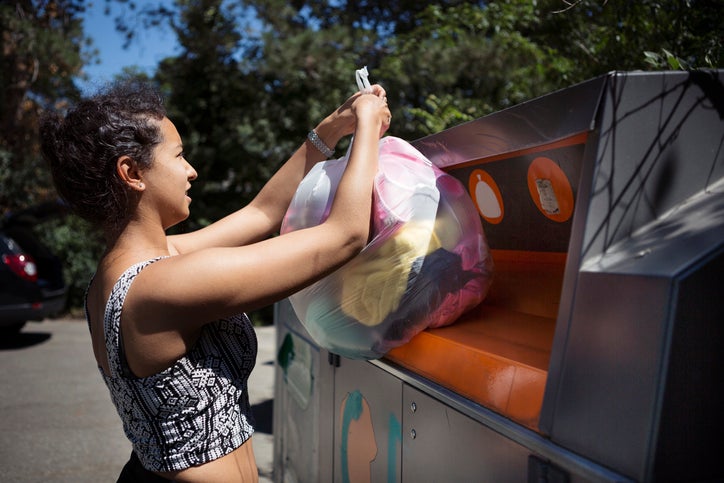
SATCoL, which describes itself as the largest charity-owned textiles collector in the UK is trialling a Fibresort machine in what it describes as a UK-first to keep end of life clothes from reaching landfill.
The organisation says it has diverted over 250 million items per year away from landfills by repurposing them. SATCoL is also working closely with companies in the sector to stimulate the recycling market and is seeking advice on different recycling trials which is still in its infancy.
Plus, through its various reuse and recycling schemes, it aims to extend the life of products as part of its efforts to lower the impact on the environment and promote circularity.
Marjonne Frost, the head of environment and sustainability at SATCoL, explained during a panel discussion at the Source Fashion event in Olympia London last month, the organisation receives about 60,000 tonnes of textile donations each year.
She said most of these donations are reusable and are resold through the organisation’s charity stores but roughly 10-20% of donations are at the ‘end-of-life’ stage and unrepairable.
SATCoL’s team also revealed during the panel discussion the steps involved to give old clothes a new life and make them ready to be reused.
The first ‘big step,’ Frost explained is sorting normal wearable textiles into various fabrics and colours with the help of the Fibresort machine at the Katherine Donation centre. The Fibresort machine uses smart technology and helps save manual labour by separating items into fibre types such as cotton, wool, and even identifies mixed-fibre blends and colours.
Elaborating on the use of Fibresort, Frost said: “Even though there’s already fibre content mentioned on the garment labels we often find that once the items go through the Fibresort machine, the labels aren’t always accurate. This means the fibre content and percentage doesn’t correspond to what’s on the labels.
Also, when you take into consideration the lifetime of the items that get donated, sometimes days old and other times from 50 years ago, the labels are either worn out or cut off. There’s no information available. Not to forget the process that otherwise we would have to go through for sorting these items.”
SATCoL’s marketing manager, Charlene Bent, highlighted that “while the lower-grade items, as discussed, go through Fibresort technology so they can continue to be recycled and put back into the fashion supply chain,” higher-grade items can be distributed to over 240 salvation army charity shops.
SATCoL’s corporate operations manager Derek Goodwin also pointed out the organisation has collaborative schemes with local government authorities and brands that include placing large bins outside convenience stores, gas stations and banks for people to donate clothes and other textiles not in use.
The organisation also told the audience it runs ‘corporate donations’ initiatives in partnership with brands. This means brands can donate their excess or faulty stock which perhaps may not have any other use with the aim of preventing it from reaching landfill.



